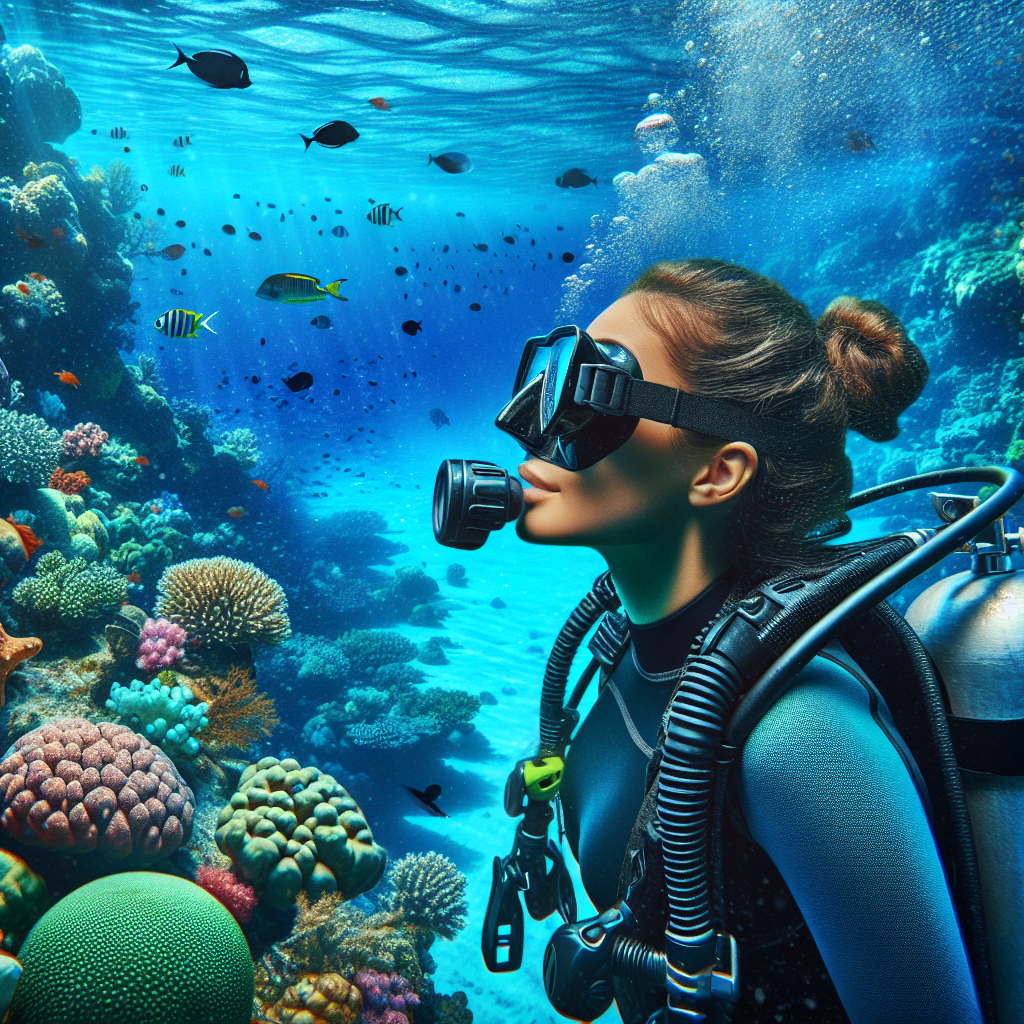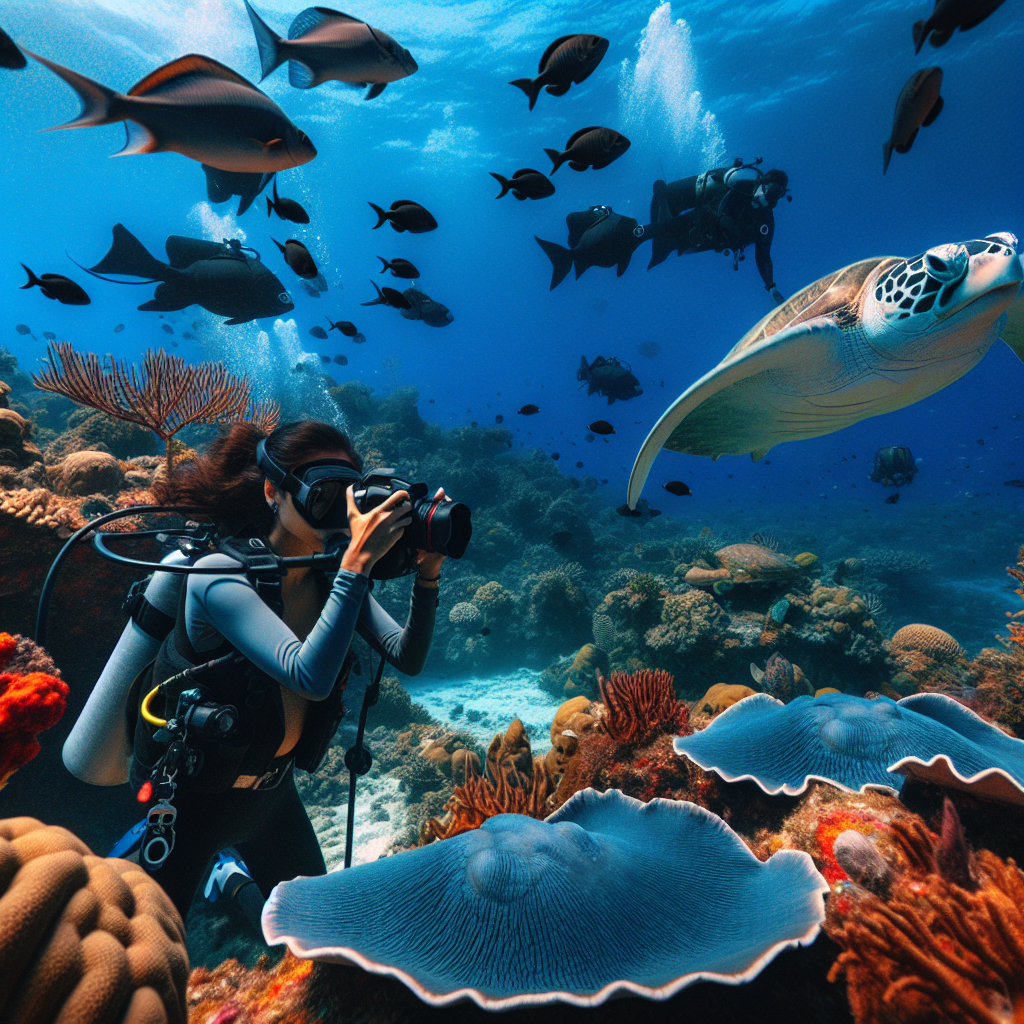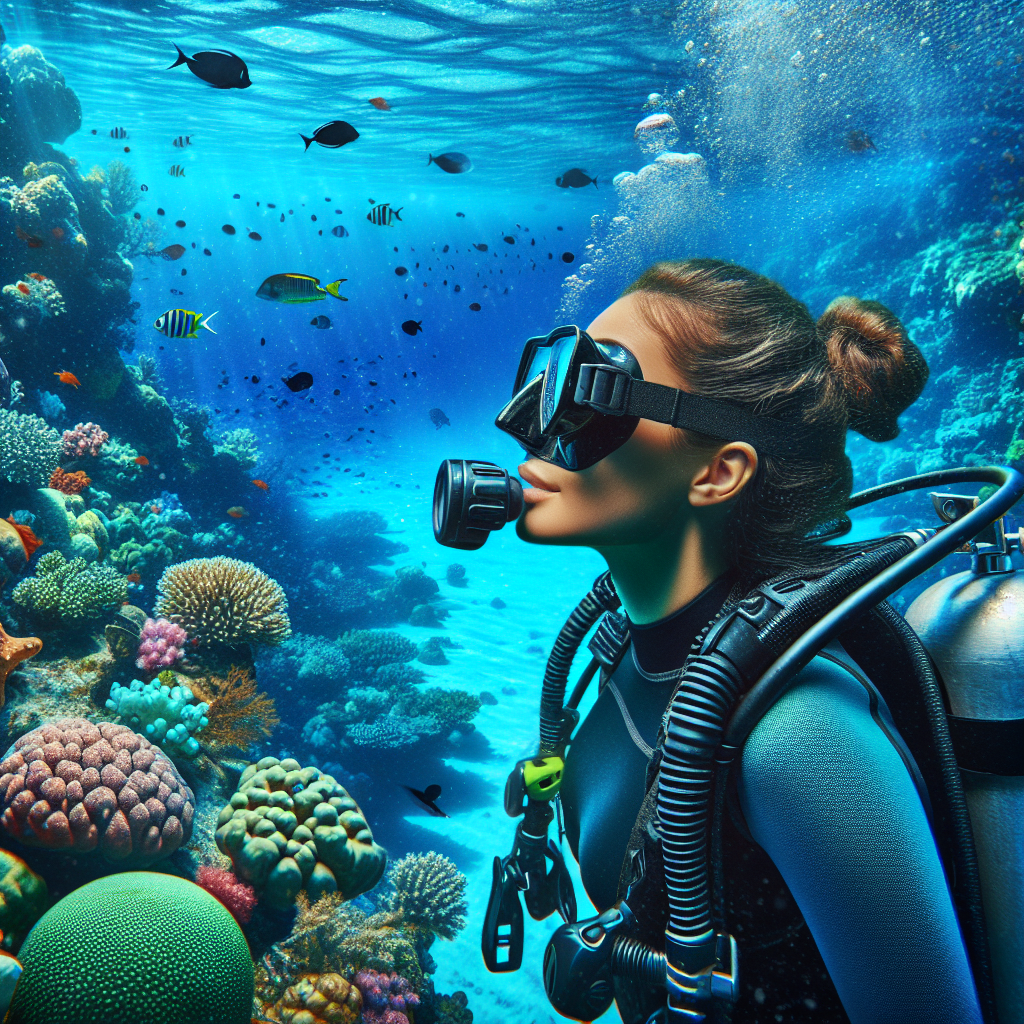Are you a beginner looking to explore the beautiful underwater world of Mexico? Look no further! Our beginner’s guide to scuba diving in Mexico will provide you with all the essential information you need to know before taking the plunge. From the best dive locations to tips for choosing the right gear, we’ve got you covered. Whether you’re an experienced diver or brand new to the sport, Mexico offers a diverse range of dive sites that are sure to leave you in awe. So grab your mask, fins, and sense of adventure, and get ready to discover the wonders that lie beneath the surface of Mexico’s turquoise waters.

1. Introduction to Scuba Diving
What is scuba diving?
Scuba diving is an underwater activity that allows individuals to explore the beauty of the underwater world. It involves wearing a self-contained underwater breathing apparatus (scuba) which allows divers to breathe underwater for extended periods of time.
Why scuba diving is popular
Scuba diving is a popular activity for several reasons. First and foremost, it offers a unique opportunity to discover the incredible marine life and underwater landscapes that exist beneath the surface of the ocean. It also provides a sense of freedom and weightlessness, as individuals have the ability to float and move effortlessly through the water. Additionally, scuba diving offers a thrilling adventure and a chance to connect with nature in a way that is not possible in any other setting.
Benefits of scuba diving
Scuba diving offers a variety of benefits, both physically and mentally. From a physical standpoint, scuba diving provides a full-body workout, as it engages various muscle groups and improves flexibility, strength, and endurance. It is also a low-impact activity, making it suitable for individuals of all ages and fitness levels. In terms of mental health, scuba diving has been shown to reduce stress and anxiety, improve focus and concentration, and increase feelings of calm and relaxation. The underwater environment has a tranquil and meditative effect on divers, allowing them to disconnect from the outside world and find peace in the beauty of their surroundings.
Safety considerations
While scuba diving is a rewarding and enjoyable activity, it is important to prioritize safety at all times. Before embarking on a scuba diving adventure, it is crucial to complete a certified scuba diving course and obtain the necessary qualifications. This will ensure that you are familiar with the proper techniques and procedures, as well as the potential risks and how to mitigate them. It is also essential to dive with a buddy and communicate effectively underwater to ensure a safe and enjoyable experience. Regularly checking and maintaining your equipment, following dive profiles, and monitoring air consumption are other important safety considerations. Always remember to dive within your limitations and adhere to the guidelines set forth by the dive operator or dive center.
2. Scuba Diving Basics
Equipment needed for scuba diving
Scuba diving requires specialized equipment to ensure safety and comfort while exploring the underwater world. The basic scuba diving equipment includes a mask, snorkel, fins, wetsuit or drysuit, buoyancy control device (BCD), regulator, and dive computer. These pieces of equipment are designed to provide divers with the necessary life support and enable them to breathe, move efficiently, and maintain buoyancy throughout the dive.
Choosing the right scuba gear
When choosing scuba gear, it is important to consider factors such as fit, comfort, and functionality. The mask should fit snugly and provide a clear field of vision, while the snorkel should be easy to breathe through and have a comfortable mouthpiece. Fins should fit properly and allow for efficient propulsion in the water. The wetsuit or drysuit should offer thermal protection and be suitable for the water temperature you will be diving in. The BCD should provide a secure and adjustable fit, while the regulator should deliver air smoothly and be easy to use. Lastly, the dive computer should be reliable and have features that meet your diving needs and preferences.
Understanding dive tables
Dive tables are a tool used by divers to plan and execute safe dives while avoiding decompression sickness. These tables provide information on the maximum dive time at a given depth, as well as the required decompression stops during ascent. By using dive tables, divers can calculate their no-decompression limit (NDL) and ensure they stay within safe limits to prevent nitrogen buildup in their body tissues.
Breathing techniques and equalization
Proper breathing techniques are essential for scuba diving, as they help conserve air and ensure a relaxed and comfortable dive. Breathing slowly and deeply allows for efficient gas exchange and reduces air consumption. Equalization is also a critical skill that divers must master to prevent discomfort and injury. It involves equalizing the pressure in the middle ear and sinuses by gently blowing air through the nose during descent. This helps to counteract the increasing pressure as you descend deeper.
Mask clearing and regulator recovery
Being able to clear water from your mask and retrieve your regulator are crucial skills for any scuba diver. Clearing your mask involves exhaling through your nose while tilting your head back and slightly lifting the bottom of the mask to allow water to drain out. Regulator recovery involves locating and retrieving your regulator in the event it becomes dislodged from your mouth. Regular practice and familiarity with these skills will ensure that you can confidently handle any water intrusion or equipment failure during a dive.
Buoyancy control
Buoyancy control is a fundamental skill in scuba diving that allows divers to maintain a level or neutral buoyancy throughout the dive. It involves managing the amount of air in the BCD to control your depth and position in the water column. Proper buoyancy control not only enhances your safety and comfort but also minimizes damage to the marine environment, as it helps prevent unintentional contact with delicate corals or other organisms.
Communication underwater
Effective communication underwater is essential for safety and coordination between dive buddies. While verbal communication is not possible, divers can utilize a variety of hand signals to convey messages and share information. Commonly used signals include indicating OK, needing assistance, pointing out interesting marine life, or signaling to ascend or descend. It is important to familiarize yourself with these signals and practice using them to ensure clear and efficient communication with your dive buddy.
Dive signals
In addition to hand signals, there are other visual and audible signals used in scuba diving to communicate important messages to divers. For example, a dive leader or dive guide may use a shaker or metal rod to get the attention of the group, or a dive boat may use flags and signals to indicate their position or to warn other boats of divers in the water. Understanding and being aware of these signals is essential for maintaining safety and awareness during a dive.
Emergency procedures
Being prepared for potential emergencies is an important aspect of scuba diving. Divers should be familiar with emergency procedures such as in-water rescue techniques, emergency ascents, sharing air with a buddy, and underwater navigation back to the boat or shore. It is also essential to have a clear understanding of the emergency protocols and communication systems in place with the dive operator or dive center you are diving with.
Scuba diving etiquette
Scuba diving etiquette refers to the code of conduct and respectful behavior that divers should adhere to while diving. This includes practices such as not touching or damaging marine life, maintaining a safe distance from corals and other fragile organisms, avoiding excessive noise or disturbances, and properly disposing of trash or waste. Respecting the underwater environment and fellow divers ensures the preservation and enjoyment of the dive site for future generations.

